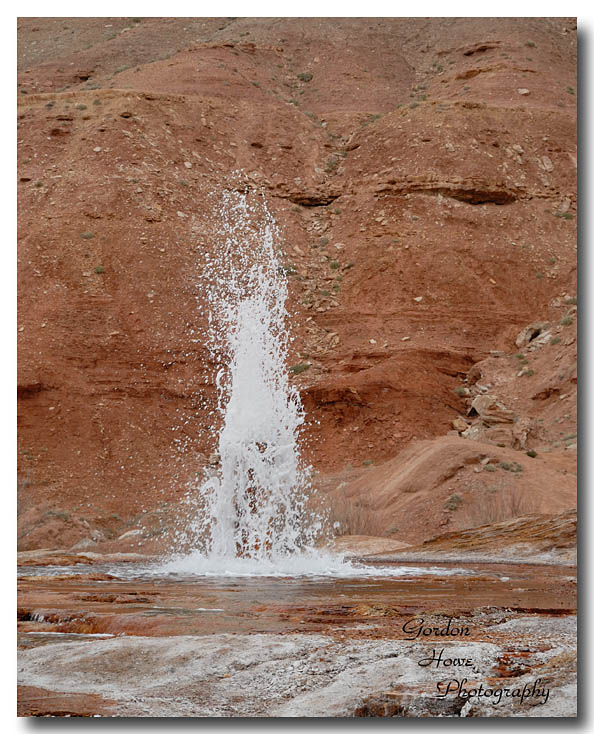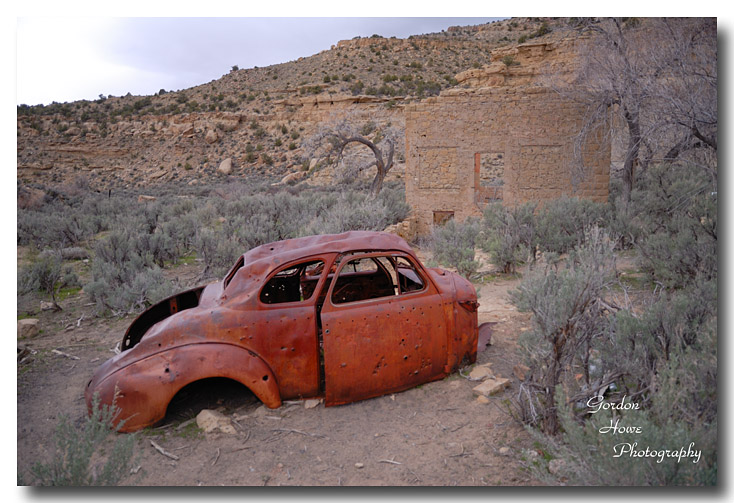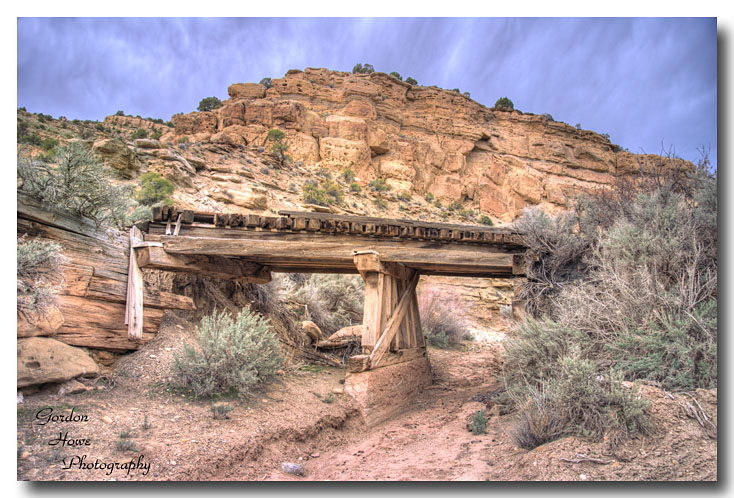What is even more interesting are the deposits that build up around geysers. Travertine, or Calcium Carbonate form interesting formations.
A close up view of the 'ripples' that are formed as the water runs down and deposits the minerals and then dries- a process that is repeated thousands of times.
After visiting the Green River museum we drove out to Sego Canyon. Sego Canyon contains three culturally distinct styles of rock art: Fremont, Ute and Barrier-style. The Fremont culture thrived from A.D. 600 to 1250 and was a contemporary with the Anasazi culture of the Four Corners area. There is also rock art from the Archaic period dating from 7000 B.C., the Barrier Canyon period from around 2000 B.C., and the Ute tribe dating from A.D. 1300.
Barrier style:
There is also a very well preserved ghost town. The boarding house has since collapsed but the boarding house still partially stands in the center of town. There are ruins to many houses scattered through out the canyon along with remnants of the coal mine and some railroad bridges.
Sego has a history unlike most ghost towns in Utah. Its history is surrounded by coal and not gold or silver. A rancher named Harry Ballard made the discovery in the early 1890s. Ballard bought the land surrounding his find and started operations on a small scale. In 1911, Ballard sold the mine to a group of Salt Lake City investors. Production started with grand plans for a long and prosperous run of coal production. The new owners built a store, a boarding house and other buildings all with their own water supply. Trouble started almost immediately when the water supply started to dry up. There were other problems as well, all of which contributed to little or no profit for the investors. Some miners were not paid for as long as a year but received script, which enabled them to buy food and other necessities for their families from the company store. In 1933, the miners agreed to become members of the United Mineworkers Union. On November 1,1947, the mine was closed and the property sold at auction.
This is part of the Company store.
One of the houses.
It needs a bit of work inside though and the roof leaks a bit...
One of the train bridges used to haul the coal out.










What a funplace to visit... I loved it...
ReplyDelete